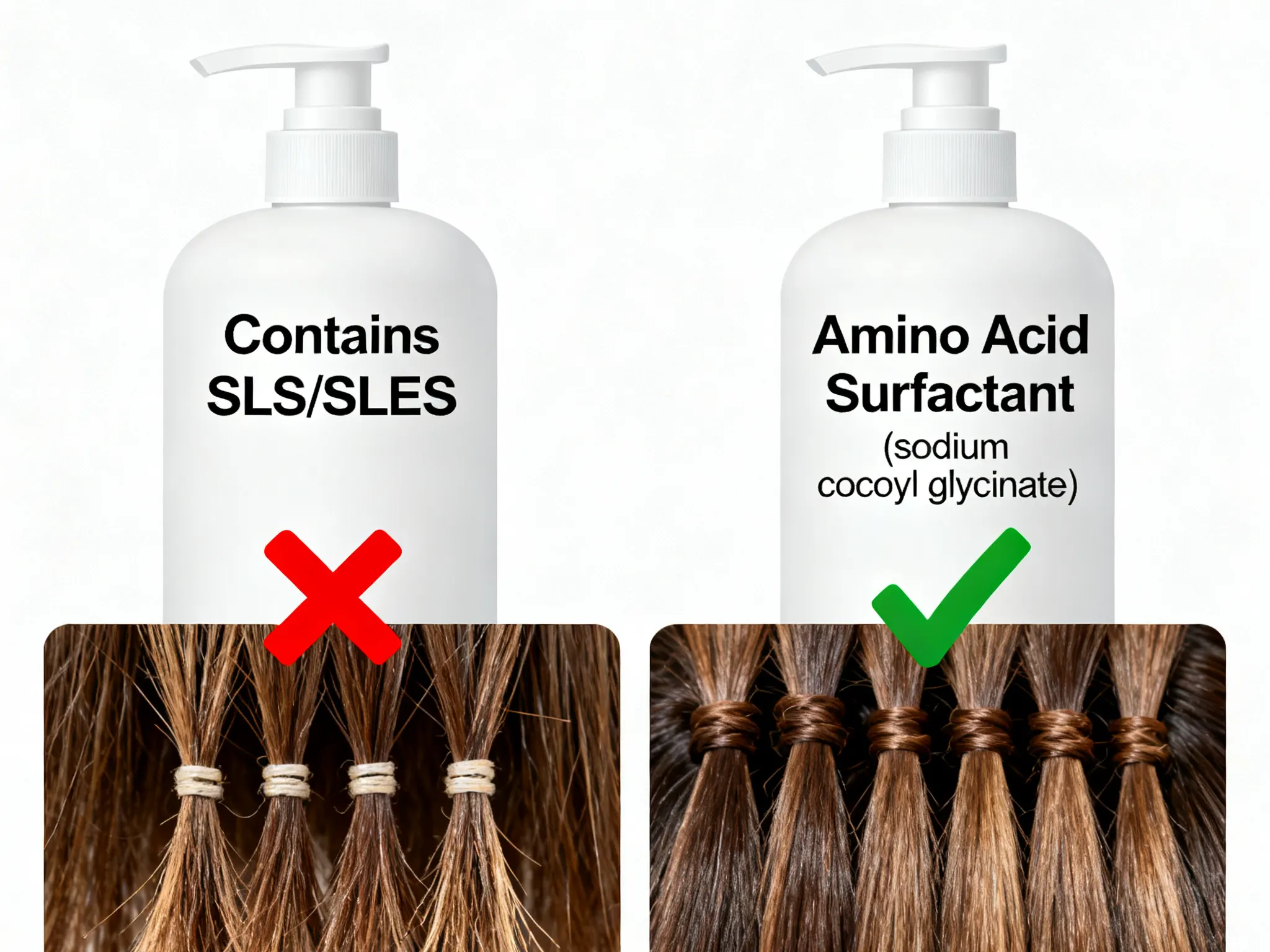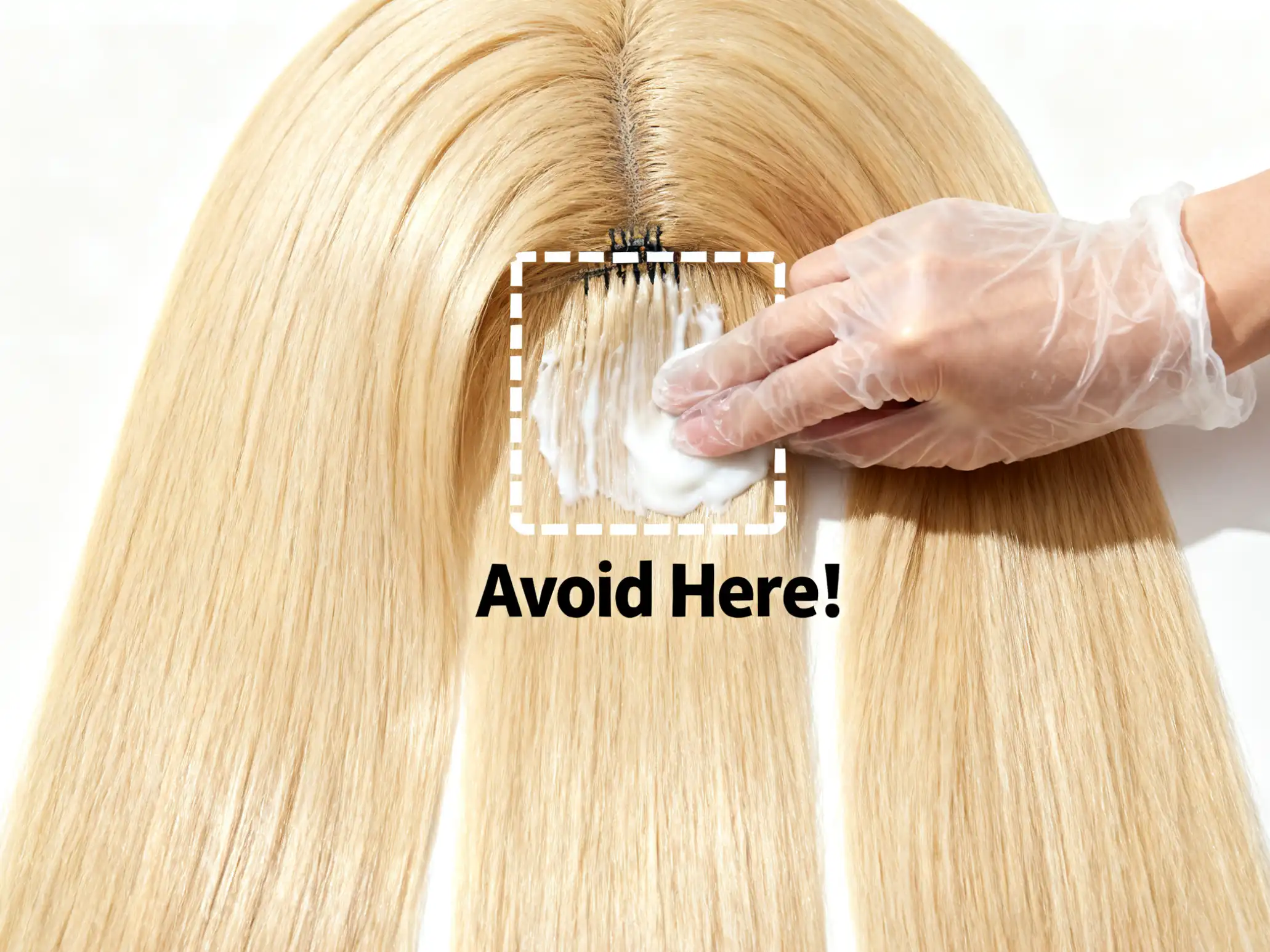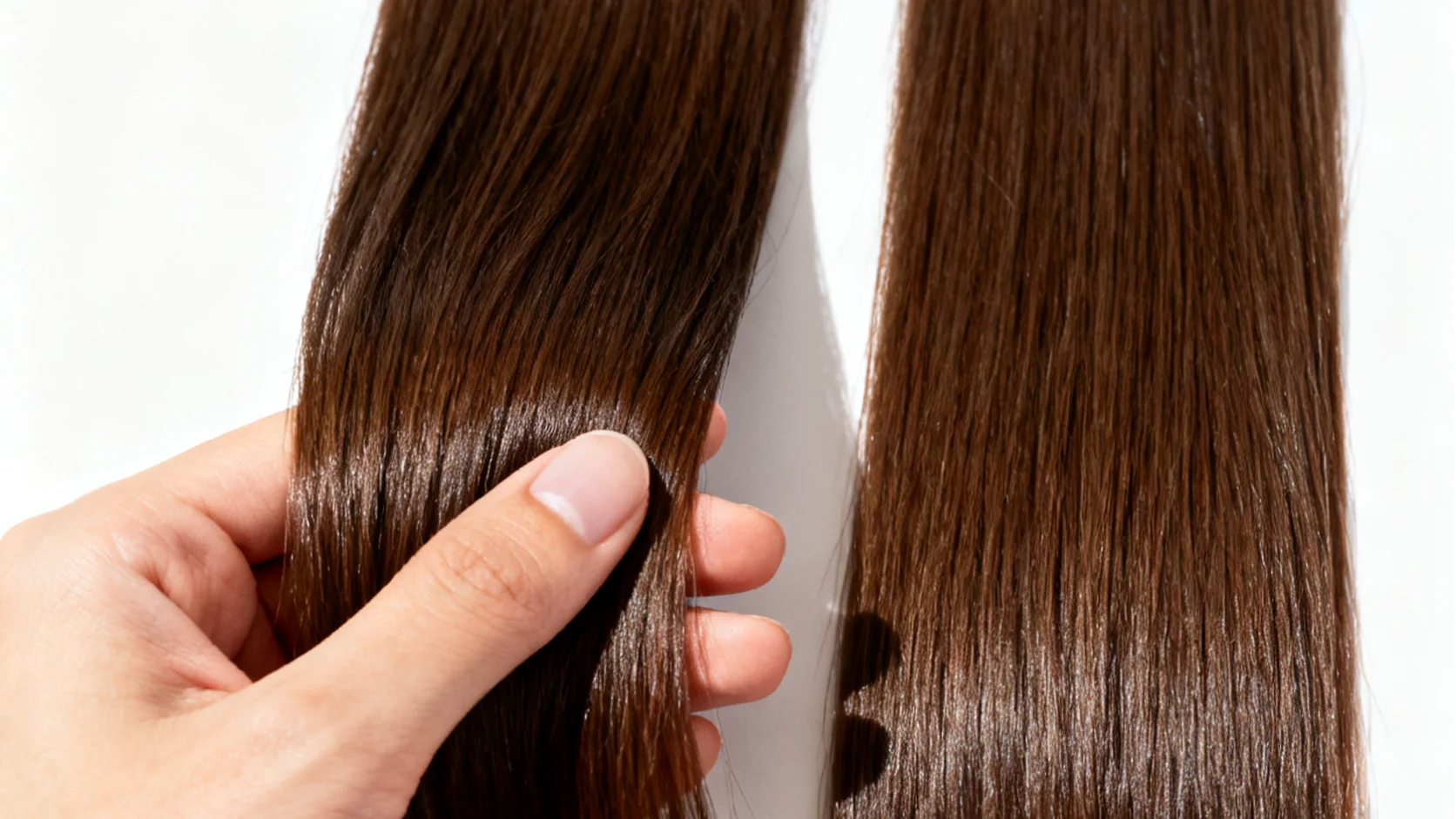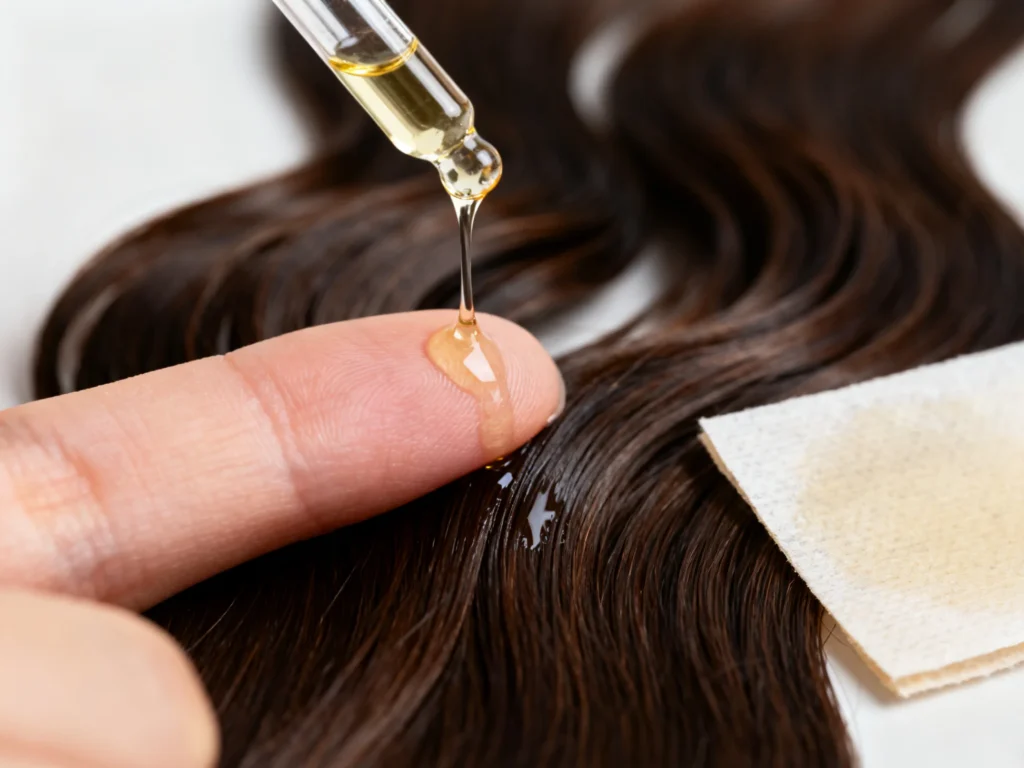If you’ve invested in human hair extensions—whether clip-ins, tape-ins, or sew-ins—you know keeping them soft, shiny, and long-lasting boils down to one key thing: the ingredients in your shampoo, conditioner, mask, and oil. The wrong components can dry out extensions, weaken bonds, or strip their natural luster; the right ones will nourish them like your own hair (without damaging the attachment points). How to Choose Hair Care Ingredients?Let’s break down exactly what to look for (and avoid) in each product.
1. Shampoo: Gentle Cleansing, No Bond Breakage
Shampoo’s job is to remove dirt and product buildup—not strip your extensions of moisture or harm the bonds holding them in place. Skip anything harsh, and prioritize mild, hydrating formulas.
Beneficial Ingredients to Seek
- Amino Acid Surfactants: Look for names like sodium cocoyl glycinate or cocamidopropyl betaine. These are gentle, non-stripping cleansers that clean without drying out the extension hair or weakening tape/sew-in bonds.
- Panthenol (Pro-Vitamin B5): Penetrates hair strands to add moisture and reduce frizz—critical for extensions, which don’t get natural oils from your scalp.
- Hyaluronic Acid: Locks in hydration to keep extensions from feeling brittle, especially if you style them with heat often.

Harmful Ingredients to Avoid
- Sulfates (SLS/SLES): Sodium lauryl sulfate (SLS) and sodium laureth sulfate (SLES) are harsh detergents that strip hair of moisture. They can also break down the adhesives in tape-ins or loosen sew-in threads over time.
- Alcohol (Ethanol/Isopropyl Alcohol): Dries out extension hair rapidly, leading to split ends and a “straw-like” texture. Avoid any shampoo where alcohol is listed in the first 5 ingredients.
- Parabens (Methylparaben/Propylparaben): These preservatives can irritate the scalp (where extensions attach) and may degrade the quality of human hair over time.
2. Conditioner: Nourish Without Weight
Conditioner is non-negotiable for extensions—they need extra moisture to stay smooth. But heavy, greasy formulas can weigh them down or gunk up bonds. Focus on lightweight, nourishing ingredients.
Beneficial Ingredients to Seek
- Plant Butters (Shea/Coconut): Shea butter and coconut oil are rich in fatty acids that soften hair without greasiness. They’re especially great for dry, curly, or wavy extensions.
- Ceramides: Repair the hair’s outer layer (cuticle) to lock in moisture and prevent tangling—one of the biggest frustrations with extensions.
- Chamomile/Aloe Vera Extracts: Soothe the scalp (important for tape-in or sew-in wearers) and add a gentle shine without buildup.

Harmful Ingredients to Avoid
- Silicones (Dimethicone/Cyclomethicone): While silicones temporarily make hair feel smooth, they coat strands and build up over time. This buildup makes extensions look dull, heavy, and hard to style—and can even weaken bond adhesives.
- Mineral Oil: A petroleum-based ingredient that clogs the hair cuticle. It leaves extensions feeling greasy and prevents other nourishing ingredients from absorbing.
- High-Concentration Proteins: Too much keratin or wheat protein can make extensions stiff and brittle. Save heavy protein treatments for your natural hair—extensions only need light nourishment.
3. Hair Masks: Deep Repair (For Weekly Use)
A weekly hair mask is a game-changer for extending the life of your extensions—think of it as a “spa day” for them. Look for formulas that repair damage (from heat or styling) without being too heavy.
Beneficial Ingredients to Seek
- Keratin: Human hair extensions are made of keratin, so replenishing it helps restore strength and reduce breakage. Opt for masks with “hydrolyzed keratin” (smaller molecules that absorb better).
- Avocado Oil: Packed with vitamins A, D, and E, avocado oil deeply penetrates thick or coarse extensions to soften and add elasticity.
- Urea: A gentle exfoliant that removes product buildup from extension strands, allowing other nourishing ingredients to work better. It also softens dry, rough ends.

Harmful Ingredients to Avoid
- Strong Fragrances (Synthetic Musk/Benzyl Salicylate): Heavy fragrances can irritate the scalp (where extensions attach) and may cause the extension hair to fade (especially for lighter shades like blonde).
- High pH Ingredients: Ingredients like sodium hydroxide (found in some “deep clean” masks) raise the hair’s pH level, opening the cuticle too much and making extensions prone to tangling.
- Sulfate Residues: Some masks include hidden sulfates to “deep clean”—avoid these, as they’ll undo the mask’s nourishing effects and dry out extensions.
4. Hair Oil: Seal in Moisture (No Grease)
Hair oil is perfect for taming flyaways, adding shine, and protecting extensions from heat. But the wrong oil can weigh them down or make bonds slippery. Stick to lightweight, fast-absorbing options.
Beneficial Ingredients to Seek
- Argan Oil: A fan favorite for extensions—its light texture absorbs quickly, adds shine, and protects against heat damage (up to 450°F). It won’t leave a greasy residue.
- Jojoba Oil: Mimics your scalp’s natural oils, so it nourishes extensions without over-moisturizing. Great for all hair types, including fine extensions.
- Sweet Almond Oil: Gentle and hypoallergenic, sweet almond oil softens dry ends and adds a natural glow. It’s also safe to use near tape-in or clip-in bonds.

Harmful Ingredients to Avoid
- Mineral Oil: As with conditioner, mineral oil coats extensions and blocks moisture absorption. It also makes bonds (especially tape-ins) slippery, which can cause extensions to slip out.
- Synthetic Fragrances: Oils with strong artificial scents can dry out extension hair and irritate sensitive scalps. Opt for unscented or naturally scented (e.g., lavender) oils instead.
- Alcohol Blends: Some “lightweight” oils mix alcohol with oil to speed up absorption—but the alcohol will dry out extensions over time. Check the label for “ethanol” or “isopropyl alcohol” before buying.
Final Tips for How to Choose Hair Care Ingredients
Always read the ingredient list first: Don’t rely on “extension-friendly” labels—check for sulfates, silicones, and alcohol yourself.
Avoid applying conditioner/mask/oil directly to bonds: Focus on the mid-lengths and ends of extensions to keep attachments strong.
Match ingredients to extension type: Curly hair need more hydrating oils, while fine hair do better with lightweight options.
Contact Us
-
Hair Extensions for Postpartum Hair Loss
Bringing new life into the world is one of the most beautiful experiences a woman can have. However, postpartum hair […]
-
How to Perfectly Hide the Edges
Have you ever envied the lush, natural-looking hair of others with extensions, while your own edges are always barely visible? […]
-
Fall Winter Hair Extensions Care
As the seasons change, so do the challenges for maintaining beautiful hair extensions. At [Full Shine Hair], we understand that […]